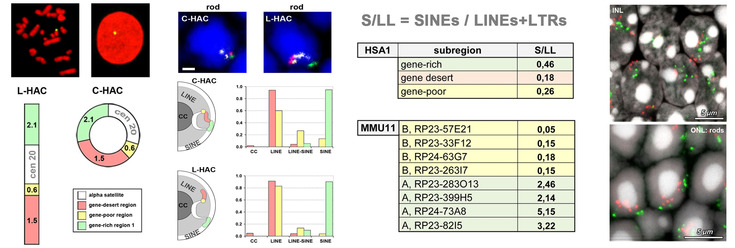Building the nucleus is a self-organizing and predetermined process
Despite absence of tethering to the nuclear lamina, inverted rod nuclei exhibit strong eu- and heterochromatin segregation. We have proposed a hypothesis for possible mechanism of segregation based on mutual repeat recognition (Solovei et al. 2016, PubMed): Chromosomal segments of eu- or heterochromatin are enriched in SINEs or LINEs/LTRs, respectively, and recognize other eu- and heterochromatin segments in the nucleus because they are enriched in the same interspersed repeats. Constitutive heterochromatin of subcentromere regions, built by satellite repeats, follow the same repeat-recognition principle. We have tested the hypothesis by analysis of localization of human artificial chromosome (HAC), consisting of eu-, hetero- and constitutive heterochromatin segments, in mouse nuclei. We showed that three HAC segments faithfully segregate together with the same classes of mouse chromatin enriched in the same type of repetitive sequences. This finding suggests that building of a functional nucleus after mitosis is a self-organizing and largely predetermined process (van de Werken et al. 2017, PubMed; Falk et al. 2019, PubMed).


